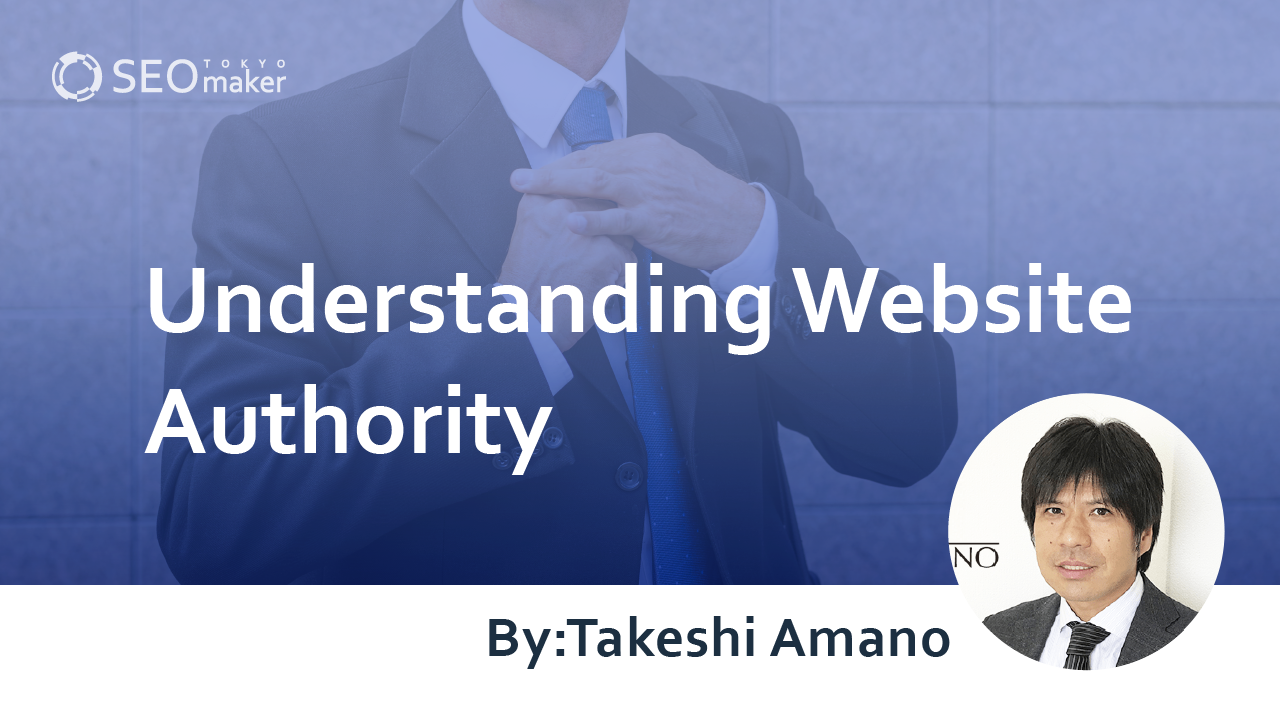Understanding Website Authority: Explained 6 Methods to Enhance it
contents

Those managing websites often encounter the term “authority,” yet many may not fully understand what it signifies. While not a frequently used term, it is a critical element in website management.
In this article, we will explain the meaning of authority in the context of websites and discuss methods to enhance it. Please read on for a comprehensive overview.
Meaning of Authority on a Website
Generally, “authority” denotes “trust” and “credibility” supported by knowledge and experience. In the realm of websites, it refers to a site that is considered reliable in a particular field or often cited and referenced by other sites.
For example, when searching for weather forecasts, many people visit the official website of the meteorological agency. Although there are other websites providing weather information, the meteorological agency’s site is frequented due to its trustworthy data.
A site is considered to have high authority when it or its content is highly trusted and recognized for its credibility.
Types of Authority
Authority in the web context is divided into two types: Domain Authority, which indicates the overall trustworthiness of a site, and Page Authority, which denotes the trustworthiness of individual pages.
We will delve into each type of authority to provide a clearer understanding.
Domain Authority (DA)
Domain Authority is a metric that evaluates and quantifies the credibility of websites on the internet. Developed by the research company Moz in 2004, it scores websites on a scale from 1 to 100 based on a set of unique criteria.
A score close to 100 indicates high Domain Authority, signifying a highly credible site, while a score near 0 indicates low Domain Authority.
Originally, Google used a metric called “PageRank” to evaluate the value of backlinks, but it was discontinued in 2016. Since then, Domain Authority has become a widely used metric to gauge a site’s authority.
Page Authority (PA)
Page Authority quantifies the credibility and authority of individual pages. Unlike Domain Authority, which assesses the entire site, Page Authority provides a more granular evaluation.
For instance, a site might have high Domain Authority, but pages with off-topic content or miscellaneous entries may struggle to rank high in search results.
Such pages might be rated low in Page Authority, indicating the need to consider both Domain and Page Authority in site management.
Google’s Perspective on Authority
While Domain and Page Authority were developed by Moz, it’s crucial to note that Google does not officially recognize these metrics.
Google has stated that its search algorithm does not include an “authority” metric per se, meaning no concrete standard exists where higher Domain or Page Authority ensures a better ranking.
However, authority and trustworthiness are still vital for site evaluation, and although not explicitly labeled as such, these factors are significant in how Google prioritizes content. Google aims to rank content that satisfies user queries, focusing on sites that are truly reliable and well-regarded by others.
Why Authority Is Crucial for Websites
The significance of authority in website management lies in securing favorable evaluations from search engines, which can lead to better visibility and easier indexing in search results.
Here’s why authority matters for websites.
Increased Visibility in Search Rankings
Search engines tend to prioritize websites with high Domain Authority (DA) or Page Authority (PA) in their rankings.
This is because a site with high authority is perceived as capable of providing valuable content to users. On the other hand, sites with low authority may not be reliably judged by search engines regarding their accuracy or trustworthiness, as delivering incorrect information to users is a concern. Therefore, the accuracy of information is a critical aspect.
Thus, higher authority sites are more likely to receive favorable evaluations and achieve higher search rankings.
Easier Indexing by Search Engines
As mentioned, websites with higher authority tend to be positively evaluated by search engines. This not only affects search rankings but also influences the speed and frequency of crawls by search engine bots. Reliable sites are more likely to be crawled quickly and frequently as search engines aim to deliver ample content from trusted sources to users.
Consequently, the priority level of crawling differs between trusted and less-trusted sites, a natural outcome of the search engines’ operations.
Ultimately, sites with higher authority are crawled more often, leading to faster indexing in the search engine databases.
Six Ways to Increase Website Authority
Let’s explore six methods to enhance the authority of a website.
- Increase update frequency.
- Operate over a long period.
- Boost the number of articles.
- Write high-quality content.
- Implement internal linking.
- Acquire backlinks.
Increase Update Frequency
First and foremost, increasing the frequency of content updates is crucial. A regularly updated site is recognized by search engines as being actively managed, which can lead to more frequent crawls and increased trust.
Conversely, if a site hasn’t been updated for months or a year, search engines may view it as abandoned, reducing crawl frequency.
Therefore, aim for frequent updates, not only with new posts but also by revisiting and rewriting existing content.
Ideally, updating something at least once a week can effectively enhance authority.
Operate Over a Long Period
The length of time a site has been operated directly affects search engine evaluations, with longer-operated sites tending to have higher authority.
However, merely owning a domain for many years without updating the site does not yield positive evaluations from search engines.
Consistent updates over a long period are essential.
For new sites, building authority takes time. Purchasing an aged domain to leverage its operational history can be a strategic move.
Increase Article Count
The number of articles is crucial for earning favorable evaluations from search engines.
At the start, a site may have few articles, making it difficult to gain recognition from search engines. Also, with low authority, achieving high search rankings is challenging.
However, as you regularly update and increase the number of published articles, the site gradually attracts more visitors, enhancing its authority.
Aim for at least 30 articles to start, with around 100 articles potentially boosting authority significantly. Therefore, plan and create content with a long-term strategy in mind.
Write High-Quality Articles
While the quantity of articles is important, it is vital to publish high-quality content that meets user needs.
In the past, search engines might have favored quantity, but modern algorithms prioritize quality.
Even with over 100 articles, if many are of low quality, the site won’t receive positive evaluations from search engines, nor will its authority increase.
Focus on creating content that aligns with search keywords and addresses the intentions and needs of the users.
Implement Internal Linking
Setting up internal links is another critical method to enhance site authority.
More internal links indicate higher relevance and expertise, improving the overall evaluation of the site.
While delivering the required information to users is essential, not all details can be covered in one article without making it excessively long and potentially hindering user convenience. By connecting related content through internal links, you can build a comprehensive site.
Related link: What are internal links? Points for strengthening SEO with internal links.
Acquire Backlinks
Gaining backlinks is vital for increasing a site’s authority.
Authority signifies a site’s credibility and trustworthiness. While the previously discussed strategies can earn search engine recognition, the most effective way to establish credibility is through endorsements from other sites.
Links from low-quality sites can diminish your site’s rating, so it’s counterproductive to establish harmful connections.
Typically, a site with many backlinks is perceived as reputable by other sites, thereby directly enhancing its authority and trustworthiness.
Reference link: 8 backlink check tools! Explaining how to check backlinks and key points
Measuring Domain Authority
To measure Domain Authority, utilize Moz’s “Link Explorer.” It’s free for limited use and provides a Domain Authority score between 1 and 100.
First, follow these steps to use “Link Explorer”.
- Visit the Moz official website.
- Enter the site’s URL in the “Enter URL” box.
- Complete the account creation form.
- Click on “Activate Your Account” in the confirmation email received.
- You will be automatically logged in to the user screen, completing the setup.
Next, here’s how to measure.
- Access “Link Explorer“
- Click “log in” in the top right corner and sign in.
- Enter the site’s URL under “Overview” in the middle of the page.
- Click “Analyze”
- “Domain Authority” will be displayed.
Top 4 Domain Authority Check Tools
While we discussed using Moz’s “Link Explorer,” there are several other tools available for measuring domain authority.
These tools vary between free and paid options, each with different features, so choose based on your needs and their capabilities.
Free Tools
Free tools are typically limited to basic features, ideal for straightforward domain authority checks. However, some may require registration or limit the number of uses, so verify these details beforehand.
Here are two free tools for checking domain authority.
-Power Rank Check Tool
-THEHOTH
Power Rank Check Tool
Power Rank Check Tool allows usage without registration, simply by entering the URL in the “Domain” field on the official page.
It measures domain authority within a range of 0.0 to 100.0 and provides additional information like domain age, including “Acquisition Date” and “Oldest Data.”
Compared to other tools, it’s faster, providing results in seconds.
Note that unregistered use is limited to one search per day, while free registered users can conduct three searches per day. If you wish to check multiple sites, we recommend signing up for a free membership.
THEHOTH
A completely free tool, THEHOTH features a straightforward UI/UX and measures domain authority by entering the URL and clicking “View Moz Metrics.”
Unlike many free tools that limit to single URL checks, THEHOTH allows for multiple URL measurements at once.
While in English, it’s user-friendly, making it a recommended tool for those who prefer hassle-free, unrestricted use.
Paid Tools
Paid tools offer comprehensive features like SEO and backlink analysis alongside domain authority measurement. They’re ideal when specific analytics needs are clear, though for solely measuring domain authority, free tools may suffice.
Here are two paid tools for checking domain authority.
-ahrefs
-Majestic
ahrefs
ahrefs is widely used, with 600,000 global users, offering extensive SEO analysis including domain authority and backlink information.
It crawls approximately 4 billion web pages every 24 hours, ensuring access to the latest data.
Prices start at $99 per month, with the ‘Lite plan’ offering:
-
-
- Registration for up to 5 sites
- Tracking for 500 keywords
- Daily measurements for 100 URLs
- Access to 100,000 backlink reports
-
While four plans are available, the ‘Lite plan’ generally suffices for domain authority measurement.
Majestic
Majestic offers unique metrics not found in other tools, allowing for a variety of analyses without the need for app installation. One key feature is the ability to immediately utilize it on your browser when you want to conduct a search.
Three plans are available, starting with the ‘LITE plan’ at $49.99 per month, including:
-
-
- Usage for one user
- Analysis of up to 1 million backlinks
- No API access
-
This tool is recommended for those seeking simple functionality at an affordable price.
Summary
Though Google doesn’t officially recognize domain authority as a specific ranking factor, the concept of authority, encompassing trust and credibility, plays a critical role in site evaluation. Begin by assessing your site’s domain authority to gauge its current trust level. Then, apply the strategies discussed in this article to enhance your site’s authority, focusing on a long-term approach for sustained improvement.










![What is a Description? Explaining the Meaning, Writing Style, and Changing Word Count – [2023 Edition]](https://www.switchitmaker2.com/en/wp-content/uploads/2024/09/what-is-description.webp)










